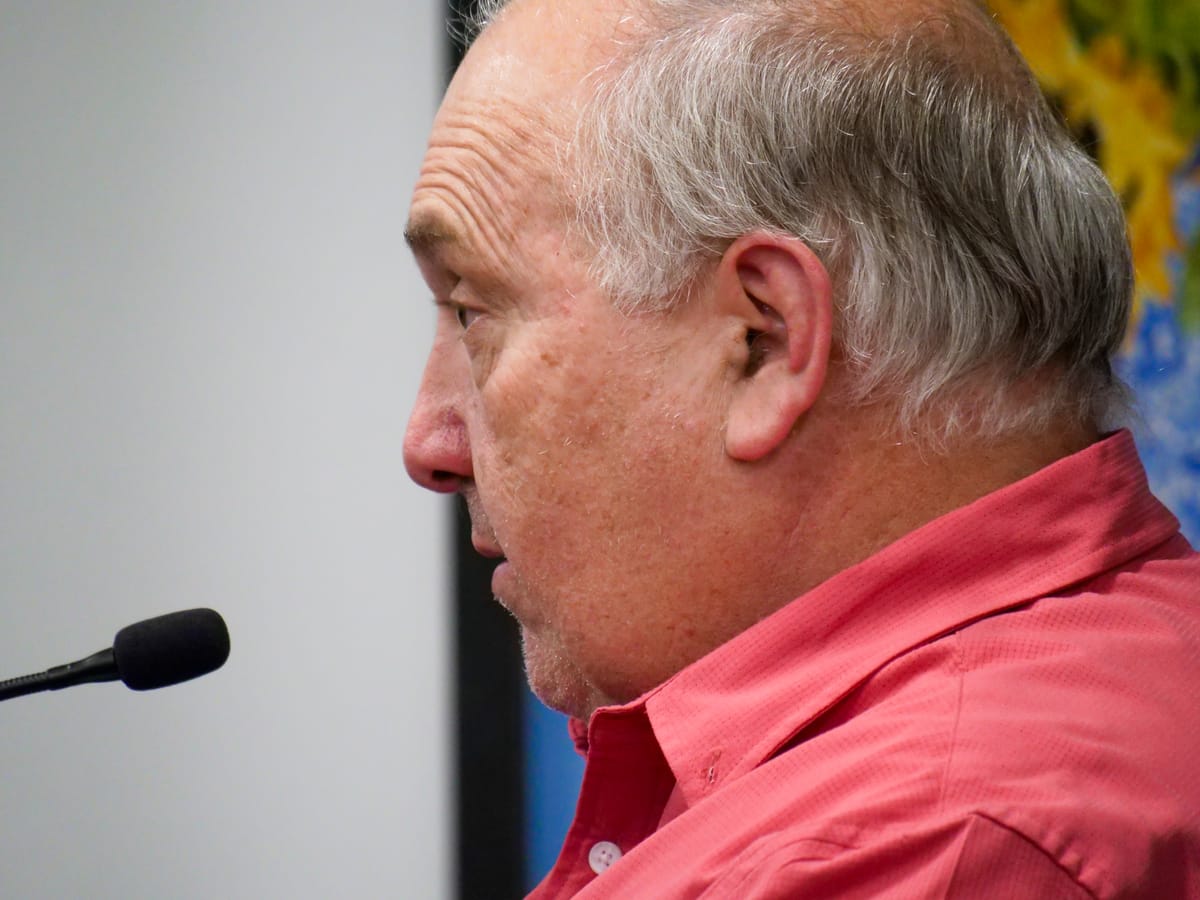Seeking Answers for Budget, CCUSD Reduces Staffing Levels
Some of the 38.5 Full-Time Equivalent Positions cut could be reinstated before the new school year if other revenue sources or cost-cutting opportunities are found.

Setting up the lights in the Madeline Ehrlich Boardroom took extra time as the main discussion at the Culver City Unified School District Special Meeting began Tuesday night.
After the lights were set correctly, a slide presentation stubbornly refused to move forward on Zoom at Tuesday night's Special Meeting, which critics may see as a fitting start to talks over cuts to positions, including four Technology Specialists, at CCUSD.
The Culver City Unified School District Board of Education voted to cut several positions within the District at a Special Meeting held Tuesday night after weeks of consideration. The move comes amid extreme pressures on the CCUSD budget and a potential loss of local control if the District's financial course is not corrected.
Given the topic's complex and sensitive nature, board members made several rounds of questions and comments before coming to a final vote. The topic was originally on the agenda of the regularly scheduled board meeting last week but was tabled to a Special Meeting in part because Board President Triston Ezidore could not attend that meeting due to a work conflict.
What was approved?
Three separate resolutions were passed on Tuesday night, each approving reductions to District staff positions. These positions include both student-facing and administrative roles at schools and in the District Office.
The complete list of the positions reduced is as follows:
School Technology Technician: 4.0 FTE for 12 months
College and Career Specialist: 1.0 FTE for 10.5 months
Driver: 0.75 FTE for 11 months
Duplicating and Mail Clerk: 0.75 FTE for 12 months
Executive Assistant: 1.0 FTE for 12 months
Guidance Technician: 1.0 FTE for 10.5 months
Health Technician: 2.0 FTE for 11 months
Human Resources Assistant: 1.0 FTE for12 months
Human Resources Specialist: 1.0 FTE for 12 months
Information Technology Supervisor: 1.0 FTE for 12 months
Receptionist: 1.0 FTE for 10.5 months
Secretary II: 1.0 FTE for 11 months
Secretary II: 1.0 FTE for 12 months
Senior Office Assistant: 1.0 FTE for 10.5 months
Senior Office Assistant: 1.0 FTE for 12 months
Custodial Supervisor: 1.0 FTE for 12 months
Assistant Director of Fiscal Services: 1.0 FTE for 12 months
Heating, Ventilation, and Refrigeration Mechanic: 1.0 FTE for 12 month
Total Classified Employee Full-Time Equivalent Reductions: 21.5 FTE
Site-Based Instructional Lead: 5.0
Teacher on Special Assignment (TOSA): 1.0
Nurse: 1.0
English/Language Arts Teacher: 1.0
Spanish Teacher: 1.0
Algebra I/Geometry Teacher: .8/.2
Physical Education Teacher: 1.0
Social Studies Teacher: 1.0
Program Specialist: 1.0
Inclusion Facilitator: 1.0
Counselor: 1.0
Director of State and Federal Programs and Assessment and Accountability: 1.0
Total Certificated Full-Time Equivalent Reductions: 16.0 FTE
Assistant Superintendent of Diversity, Equity and Inclusion: 1.0
Total Special Full-Time Equivalent Position Closures: 1.0 FTE
Total FTE Position Reductions: 38.5
While these cuts are being made to positions in the District, they may only serve as a stopgap. These reductions are being made to ensure the District's budgetary health, but efforts are still underway to find other sources of revenue or potential cuts to save these positions.
"This doesn't end tonight, this process doesn't end on May 15, and it doesn't even end over the summer," Board of Education member Lindsay Carlson said at Tuesday's meeting.
One opportunity superintendent Brian Lucas mentioned was a $500,000 Children and Youth Behavioral Health Initiative (CYBHI) the District will receive over the summer.
Additionally, those not brought back for the next school year will be placed on a 39-month rehire list that would give them priority should positions be opened or reinstated within that timeframe.
Why is this happening now?
Board Member Stephanie Loredo ensured that the specifics of the stakes were on the record Tuesday, working with staff to explain that if any of the proposed reductions were not made, the Second Interim Budget report CCUSD must submit to the State this month could result in disastrous consequences.
Each year, districts are required to submit two reports on the budget to the California Department of Education. They can receive one of three certifications – Positive, Qualified, or Negative – based on a district's perceived financial health over the next three years.
The first report illustrates the financial and budgetary status from February 1 to October 31, and the second covers November 1 to January 31. Each of these reports is due within 45 days of the end of the period it covers, which sets the date the 2025 2nd Interim Report is due at March 17.
Given the reductions presented at Tuesday night's meeting, Assistant Superintendent of Business Services Santha Rajiv told the Board that the District's second Interim Report would receive a Qualified Certification. She said that if even one of these reductions were removed, it would "most likely" be given a Negative Certification — a designation only seven school districts in California received on the first Interim Report this year.
While not resulting in dramatic structural change, a Qualified Certification represents that the State believes a District may be unable to meet its financial obligations over the next three years. CCUSD would be required to submit a Corrective Action Plan to outline the specific actions it would take to correct the budget.
A school district receiving a Negative Certification has a far more uncertain future. Immediate intervention from the County Office of Education or the State is often seen in districts receiving this certification, as this designation indicates a more certain conclusion that the District will not be able to meet its financial obligations.
If CCUSD's Second Interim Report were given a Negative Certification, a state-appointed financial advisor or representative could be assigned to the District to oversee its financial operations. The District may not be allowed to enter contracts or make financial decisions without state approval.
Oakland Unified School District, which received a negative certification on the 1st Interim Report of the 2024-2025 school year, eliminated 97 positions last Wednesday to work towards addressing an estimated $95 million deficit.
OUSD also received a Negative Certification in 2003, which resulted in the State assuming control of financial operations. California took out a $100 million loan on the District's behalf that took over two decades to repay.
When Inglewood Unified School District received a Negative Certification in 2012, a state representative was assigned to oversee its financial operations, significantly reducing local control and resulting in significant layoffs.
Vallejo City Unified School District in Northern California received the Qualified Certification CCUSD hopes to achieve with these reductions for its first Interim Report this year. However, it has still had to make drastic cuts to correct its budget. Its school board voted in mid-February to close two schools as part of efforts to reduce expenditures by $12.8 million.
While shutting down schools in Culver City has not been discussed, reduced state funding due to a declining attendance trend paired with a loss of one-time funding stemming from the COVID-19 pandemic has made CCUSD's budget challenging to manage.
"Without personnel reductions," Superintendent Brian Lucas explained, "we would be in a situation where we are in a negative budget."
What do people think?
Board President Triston Ezidore, the lone dissenting vote for all three resolutions Tuesday night, viewed the problem from an operations perspective.
Ezidore expressed concern with the justification behind the erasure of these particular positions, hoping to see the metrics behind the decisions and the plans to assimilate the duties of eliminated student-facing positions into other roles.
He shared concerns about putting more work on departments that have already expressed sentiments of being overworked.
"We have put more responsibilities on departments that are already saying that they are overworked and have too much to do," Ezidore said about the reductions.
However, most board members saw these cuts as a move necessitated by past financial mismanagement and increasing costs. One public commenter brought up what the public saw as a misuse of funds, including excessive spending on attendance fliers and a highly controversial contract and lawsuit involving nonprofit service provider New Earth.
While pundits consider some of the spending leading to the $23.1 million gap between expenditures and revenues over the past two years superfluous, expenses like compensation increases were positive and unavoidable costs.
"For anyone who wants to say that our decision to compensate our staff adequately is a bad decision, I am going to disagree," School Board Member Andrew Lachman said. "You attract quality people by giving them reasons to come here, so I will not apologize for that."
Many Southern California school systems face financial problems, an issue not lost on board members. Lachman — who showed some reservations about approving these cuts at last Tuesday's regular School Board Meeting — noted that school districts in Pasadena and Ventura have recently had to make cuts to their staffing levels.
In a statement following the School Board's decision to cut 151 Full-Time Equivalent (FTE) positions last Thursday, Pasadena Unified School District Superintendent Elizabeth Blanco cited declining enrollment, increasing costs, and the expiration of one-time COVID relief funds as contributors to their deficit — very similar to the challenges faced in Culver City.
Lachman and Board Member Carlson argued that some blame should be placed on the State for the dire situation CCUSD and similar districts find themselves in. They argued that more money should be invested into school districts like CCUSD and PUSD to ensure the health of the State's youth.
"California has shamefully underfunded public education," Carlson said. "Our state has put us in this predicament."
Lachman also suggested several ideas to generate revenue, including reducing contracts and seeking incentive-based agreements to save money. Rajiv said it will also consider reorganizing its permit fees to generate more capital from the use of its land and campuses.
Attendance recovery through mediums like Saturday School, which just recently started at Culver City High School, is another revenue-generating option mentioned by School Board Member Brian Guerrero. He also highlighted the importance of scrutinizing every expense to ensure they maintain the quality of care and education schools provide.
"We are not talking about any plan to reduce services to students," Guerrero said. "It's finding ways to be more efficient with the money we spend...because some of that spending could be potentially sloppy or haphazard."
At the end of conversations around each resolution, a vote was taken. Each resolution passed 4-1, with Board President Ezidore serving as the lone dissenter.




Comments ()